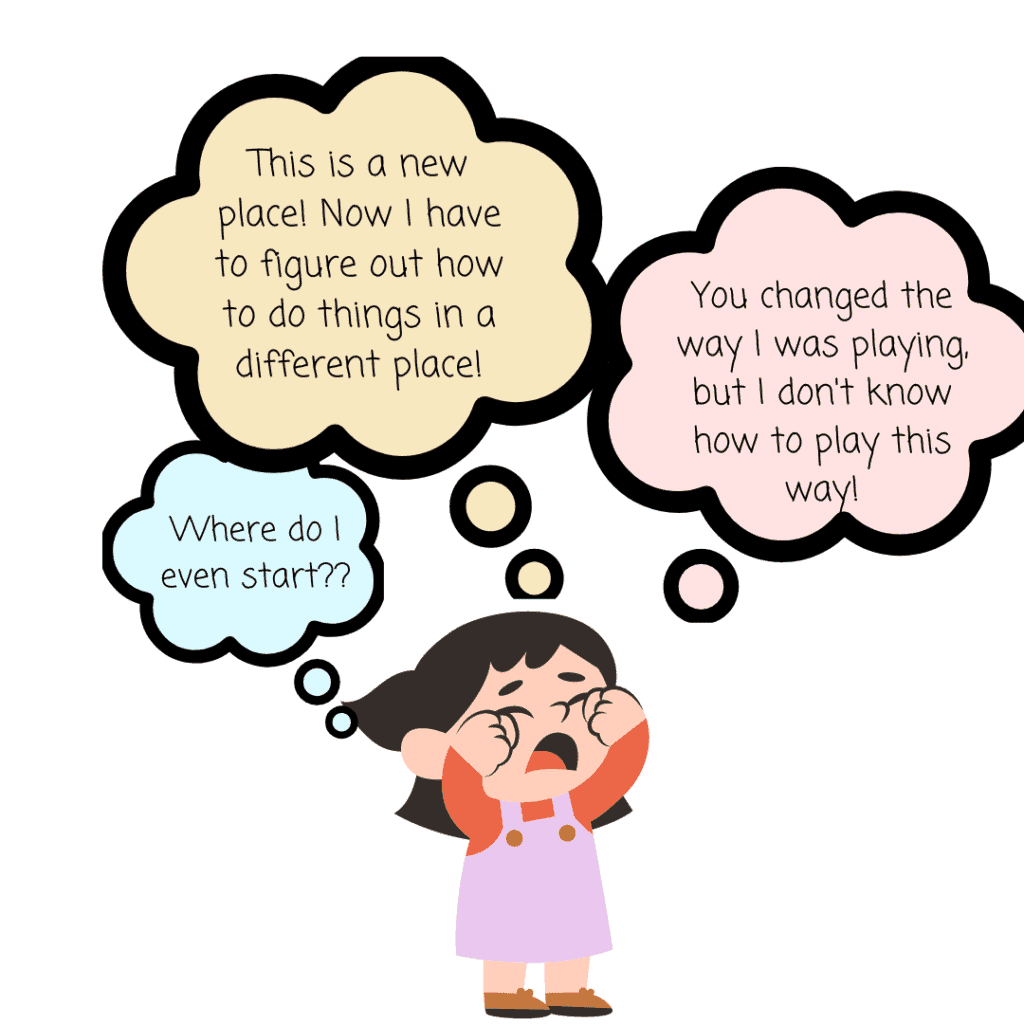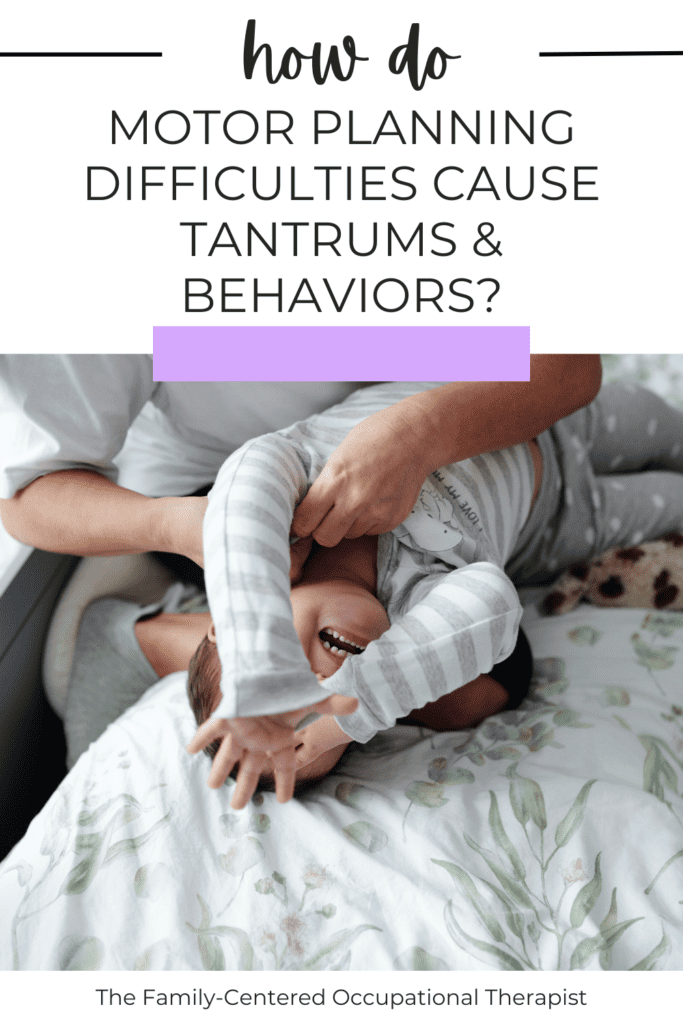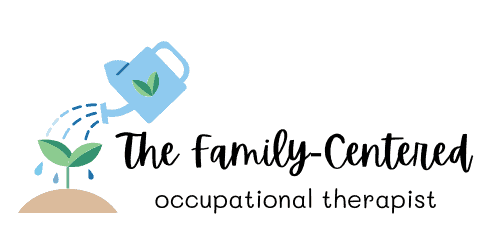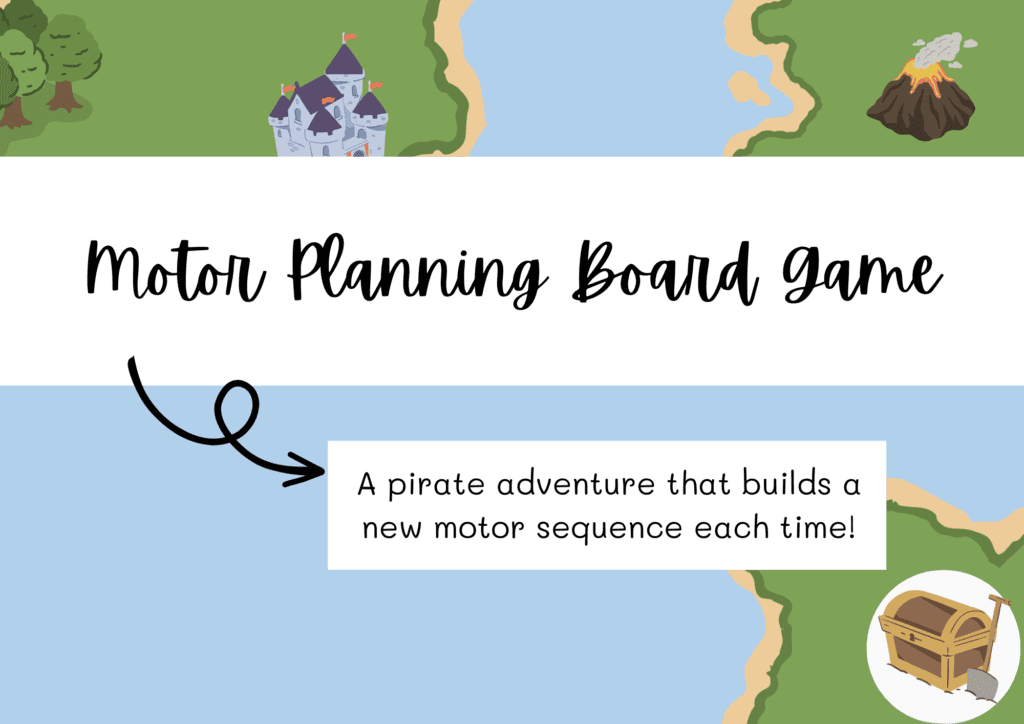Motor planning (also called praxis) is one of the trickiest concepts for me to explain to caregivers. It can be really confusing to connect difficulty with motor planning to, say, your child’s meltdown about dinner yesterday. However, motor planning and tantrums can be directly related.
It’s important to remember that behavior is a form of communication, and when things are frustrating, challenging, or unknown, children are most likely to have challenging behaviors or emotional reactions. For children with motor planning difficulties, changes and transitions can be a challenge.
So, what is motor planning?
Motor planning (also known as praxis) involves 3 components:
- Ideation
- Coming up with the idea of what to do
- Planning
- Figuring out how to do the action, including the order of the steps required
- Execution
- Carrying out the planned action
For example, if you were provided with a ball, you might come up with the idea to bounce it (ideation). You then need to plan how hard to bounce it, where you will bounce it, and how hard you’ll have to throw it to get it to bounce (planning). Finally, you need to then use your arms in a coordinated manner in order to bounce the ball (execution).
Important: kids oftentimes develop what we call splinter skills, where they have practiced something hundreds of times (for example, jumping jacks or catching a ball) and can do it really well. These kids might still have trouble with motor planning, but it happens when they’re asked to do a new, unfamiliar action, rather than the familiar actions.
Okay, so why is motor planning causing meltdowns?
Motor planning can affect the following 3 areas, as depicted in the diagram below.

Coping with change
Children with motor planning difficulties learn how to do things in a specific way. For example, they learn to eat with their particular utensils, at that particular table, with the foods they are used to eating. If you unexpectedly decide to eat in the car that day, it changes the your typical routine.
So now, you’ve disrupted their sequencing of their motor plans (i.e. you’re going in the car first instead of eating first). And you changed the environment, so your child might have difficulty figuring out how eat in the car with the change of position and chair. This may cause a full-blown meltdown without them being able to tell you why.
These kids may seem very rigid in the way they do things because of the reliance on routines and familiarity. They might want their same fork every time, or insist in sitting in the same chair at each meal, becoming upset if you sit there instead. This control helps them to ensure that they can do the things they need to.

Difficulty playing with other kids
Your child might have difficulty with playing with other kids their age, especially when those kids try to change the way they’re playing. For example, your child might feel comfortable with the motor plan of having a pretend tea party with their Barbie’s. Then, their friend comes along and suggests that the Barbie’s bake cookies for the tea party. But your child doesn’t have a motor plan for pretend baking yet! This can be really stressful.
Instead of breaking down, your child might seem “bossy” by saying that they have to play tea party. They might throw a fit. They might change to a different game. Either way, they can avoid having to try a new motor plan. Kids with motor planning challenges prefer to play with adults for this reason – adults don’t care if you want to play a certain way!
Frustration tolerance
Your child may appear to get upset really easily when they have motor planning difficulties. Maybe you changed the environment. Maybe it’s louder than normal and they have to really think about this motor plan, but the noise is distracting them. Maybe they’re trying to build a pirate ship but they can’t figure out how to do it. All of these challenges can result from difficulty with motor planning.
How can we help with motor planning difficulties?
There are a few things you can do to support a child with motor planning challenges:
- Use descriptive language about objects to help children learn about object affordances (e.g. “this ball is bouncy and round”)
- Describe your child’s body in relation to space and time
- Think of using preposition words for this (e.g.” your body is behind the ball”, or “let’s bounce first and then skip”)
- Show, don’t tell them how to do things
- Better yet – help them figure out how to do things
- Use leading, open-ended questions and show them the start of the action with your body – for example, if they’re trying to figure out how to get on a swing, but it’s moving, say “hmm, that swing is moving a lot, I wonder how we can get it to stop”
- Set up obstacle courses around your house. Bonus: have your child set it up!
- Play the floor is lava
- Challenge your child to come up with new ways to use an object (e.g. a ball turns into an ice cream scoop on a cone)
As an extra resource, try this low-prep, printable motor planning game. This game differs from other motor planning resources as it targets sequencing along with mirroring movements. Additionally, the movements are different than the standard animal walks and yoga poses kids have typically practiced before, to avoid splinter skill interference.
As always, feel free to contact me with any questions or comments!


